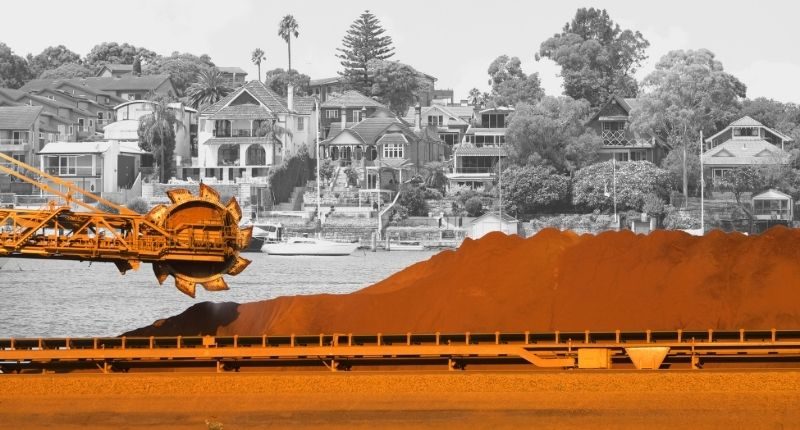- The commodity markets - especially iron ore - have been positive for Australia
- The growth of China has fuelled our resource industries, and kept Australia growing
- While commodity prices have risen 34% over the past year, properties have grown 10%
Australia is a major producer and exporter of commodities, and this has put a bedrock underneath our national economy. We are – perhaps – the envy of much of the world.
Back in 2009, we blew past the Global Financial Crisis (GFC), thanks to the galloping mining boom of the time. As other western economies lurched into recession and housing downturns, we just kept on growing.
It was not until the 2020 global pandemic that Australia was knocked – albeit briefly – off a record 30-year run of positive economic growth.
Almost as soon as Australia entered a recession last year, it was out of it again, growing 3%+ in two subsequent quarters.
The reasons were plentiful, but mainly centred on our relative ability to handle the virus, and managing to keep our booming resources sector open for business.
Over in Brazil, a very different approach was taken in regards to the pandemic, with disastrous effects as regards loss of life and the economy. Their mining industry had to shut down, further bolstering Australia’s position and commodity prices.
Iron mania
Today, the iron ore market has the mineral at an incredible US$228 a tonne. A year ago, it dipped under US$70.
Back in 2016, iron ore prices had settled in at around $65/tonne, rising briefly to US$120 in 2019 before settling back to just under US$100 for most of the year and into 2020. After dipping as the world entered lockdowns a year ago, it has been on a steady incline ever since, accelerating over the past few months to hit record highs.
Iron Ore Prices, 2018-

While 50 countries mine the ore around the world, Australia makes the right grade for what China wants. Australia’s iron ore exports hit US$104 billion in March. Recent good economic news has only pushed the iron ore price to new heights, which is more positive news for the Australian industry and economy.
What’s beneficial for our economy will ultimately propel the local property market. In an era of low interest rates, borrowing money has never been cheaper. If people feel more confident and wealthier, so the demand for property rises.
Preliminary estimates for April from the Australian Bureau of Statistics (ABS) indicate that the commodity price index increased 3.1% (on a monthly average basis) in SDR* terms, after increasing by 2.8% in March (revised).
Interestingly, the average house dwelling prices also increased +1.8% in April after rising +2.8% in March, according to the CoreLogic national property index.
Commodity Price Index, and Asking Prices (Houses/Units), 2016-

The chart above shows SQM Research’s Asking Prices (what properties are advertised for right now) together with the commodity price index.
Over the past year, the commodity price index has increased 34.7% while national house prices have risen +10.2%.
Is this proof of a relationship?
No, but prices on the global commodity markets will certainly have some effect on both our economy, and our property market. Probably with a lag effect. It will take a few quarters of upturn on the one (commodities) to filter through to the property market, and it will also work slowly on the way down.
So, if things turn south in the commodity prices in the future – most commentators believe the current iron ore prices are unsustainable – be aware that this may feed negatively into both our local economy and property markets.
Western Australia, half of whose economy is resources, went through a six-year property downturn after the last mining boom ended.
For now though, it looks like commodities are up, and even if they come off a bit, they could remain relatively high for some time. Time will tell.
~~
* SDR = Special Drawing Rights; a weighted basket of major trading currencies, which keeps the comparisons more meaningful between countries.








